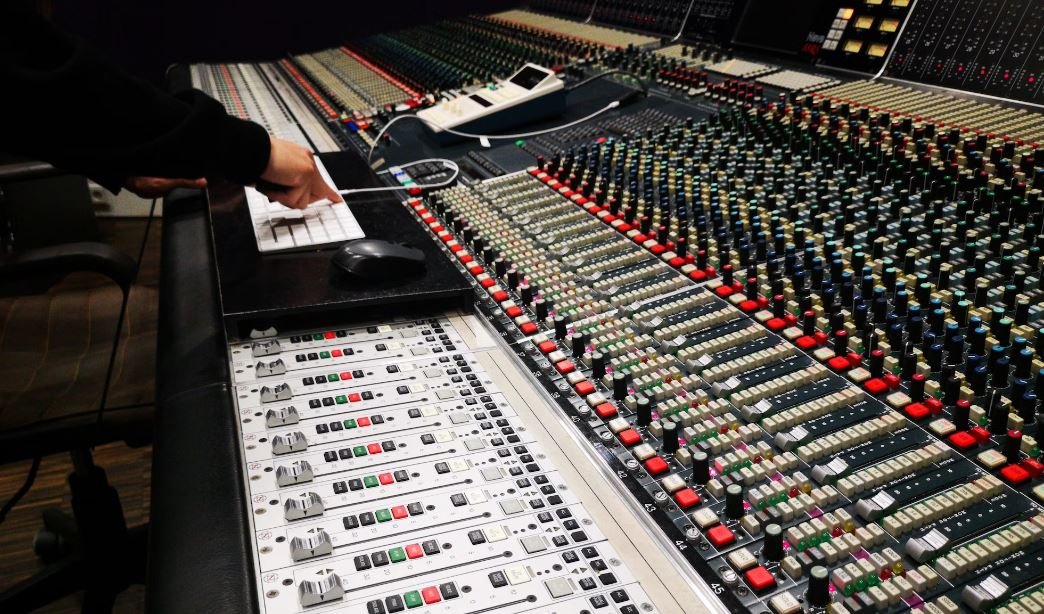Why GPT Is Better Than MBR
Globally Unique Identifier Partition Table (GPT) and Master Boot Record (MBR) are two different partitioning schemes used in computer systems. Although MBR has been a standard for a long time, GPT brings several advantages that make it the preferred choice for modern systems. This article highlights the key differences between GPT and MBR and explains why GPT is a better option.
Key Takeaways
- GPT provides support for larger disk sizes, exceeding the limitations of MBR.
- GPT offers better partition management and recovery capabilities.
- GPT includes a backup of the partition table, minimizing the risk of data loss.
- GPT allows for up to 128 partitions, compared to MBR’s limit of 4.
- GPT supports more modern features, such as secure boot and UEFI firmware.
Understanding GPT and MBR
GPT and MBR are different methods of structuring partitions on a storage device, such as a hard drive or SSD. While MBR has been widely used for decades, GPT was introduced to overcome its limitations and provide improved functionality. *GPT eliminates the 2.2TB size limit imposed by MBR, making it suitable for large-capacity drives.*
GPT Advantages
GPT brings several advantages over MBR, which make it a superior option in modern systems. Firstly, GPT allows for a much larger disk size. MBR is limited to a maximum of 2.2TB, while GPT can handle disks up to 18.4 million TB in size, theoretically. *This makes GPT the go-to choice for systems with high-capacity drives*.
Another significant advantage of GPT is its partition management and recovery capabilities. With GPT, you can create up to 128 partitions per disk, compared to the 4 primary partitions allowed by MBR. Additionally, GPT includes a backup of the partition table at the end of the disk, minimizing the risk of data loss due to partition table corruption. *This built-in redundancy provides an added layer of protection for your data*.
GPT also supports more modern features that are not available in MBR. One such feature is secure boot, which ensures that only trusted software can run during system startup. GPT partitions are also compatible with Unified Extensible Firmware Interface (UEFI) firmware, which offers faster boot times and improved security features. *These modern features make GPT a better choice for systems demanding higher security and performance standards*.
GPT vs MBR: A Comparison
| GPT | MBR |
|---|---|
| Supports disk sizes up to 18.4 million TB | Maximum disk size of 2.2TB |
| Allows up to 128 partitions | Supports only 4 primary partitions |
| Includes a backup of the partition table | No built-in backup |
| Compatible with secure boot and UEFI firmware | Does not support secure boot or UEFI |
GPT Limitations
While GPT brings significant advantages, it is important to note that it is not universally compatible. Some older systems and operating systems do not fully support GPT. However, most modern systems, including Windows, macOS, and Linux, have no issues with GPT.* It’s always recommended to check the compatibility of your specific setup before migrating to GPT*.
Conclusion
With its ability to handle larger disk sizes, improved partition management, and support for modern features, GPT outperforms MBR in many areas. These advantages make GPT the preferred partitioning scheme for modern systems. *If you are working with large-capacity drives or require enhanced security and performance features, GPT is the way to go*.

Common Misconceptions
Misconception: GPT is more complicated than MBR.
- GPT provides more flexibility for partitioning drives.
- GPT supports larger drive sizes than MBR.
- GPT offers better reliability with its redundant partitioning scheme.
A common misconception people have about the GPT (GUID Partition Table) is that it is more complicated than the MBR (Master Boot Record) partitioning scheme. However, this is not necessarily true. While it is true that GPT introduces some additional complexities due to its larger structure, it also offers several advantages over MBR that make it worth considering.
Misconception: GPT is not compatible with older systems and software.
- GPT is supported by both BIOS and UEFI systems.
- Operating systems like Windows, macOS, and Linux can work with GPT partitions.
- GPT can coexist with MBR partitions on the same drive.
Another common misconception surrounding GPT is that it is not compatible with older systems or software. While it is true that older systems with BIOS firmware may have limited support for GPT, most modern systems support both BIOS and UEFI (Unified Extensible Firmware Interface), which fully support GPT. Additionally, popular operating systems like Windows, macOS, and Linux have built-in support for GPT partitions, allowing users to take advantage of its benefits.
Misconception: GPT does not provide any performance benefits over MBR.
- GPT allows for more efficient disk utilization with its smaller partition alignment size.
- GPT minimizes the risk of boot code corruption by storing it in multiple locations.
- GPT has a higher tolerance for data corruption and offers better data recovery options.
It is often mistakenly believed that GPT does not provide any performance benefits over MBR. However, GPT offers several performance advantages that make it superior in certain situations. For example, GPT enables more efficient disk utilization by using a smaller partition alignment size, reducing wasted space on the drive. Moreover, GPT stores the boot code in multiple locations, minimizing the risk of boot code corruption and making booting more reliable.
Misconception: GPT cannot be used on removable drives or external storage devices.
- GPT can be used on both internal and external storage devices.
- Most modern operating systems support booting from GPT on external drives.
- Using GPT on external drives allows for easier data interchange between different systems.
Some people believe that GPT cannot be used on removable drives or external storage devices, assuming that it is limited to internal drives only. However, this is not true. GPT is fully compatible with both internal and external storage devices. Additionally, most modern operating systems include support for booting from GPT on external drives, allowing users to have the same benefits of GPT on portable storage. Using GPT on external drives also simplifies data interchange between different systems, as GPT is widely supported.

Introduction
In the world of data storage and computer systems, there has always been a debate between two popular methods: GPT (GUID Partition Table) and MBR (Master Boot Record). While both serve the purpose of organizing and managing disk partitions, GPT offers several advantages that make it a superior choice. In this article, we will explore 10 interesting aspects comparing GPT to MBR and why GPT emerges as the better solution.
Table: Partition Size Limits
One crucial factor when considering a storage solution is the maximum partition size it can handle. GPT excels in this aspect, enabling larger partitions compared to MBR.
| GPT | MBR |
|---|---|
| Supports up to 18.4 million TB | Supports up to 2.2 TB |
Table: Number of Partitions
The ability to create multiple partitions is vital for organizing data efficiently. GPT surpasses MBR by allowing for an increased number of partitions.
| GPT | MBR |
|---|---|
| Supports up to 128 partitions | Supports up to 4 primary partitions |
Table: Compatibility
Compatibility with various operating systems is an essential consideration. GPT offers wider compatibility than MBR.
| GPT | MBR |
|---|---|
| Compatible with both newer and older operating systems | May encounter limitations with older operating systems |
Table: Data Redundancy
Data redundancy ensures that information remains intact even in the event of failure. GPT provides enhanced protection compared to MBR.
| GPT | MBR |
|---|---|
| Uses primary and backup partition tables | Only has one copy of the partition table |
Table: Boot Configuration
The boot configuration process is more flexible and reliable with GPT.
| GPT | MBR |
|---|---|
| Supports UEFI (Unified Extensible Firmware Interface) | Typically used with BIOS (Basic Input/Output System) |
Table: Disk Space Efficiency
GPT utilizes disk space more efficiently, reducing wasted capacity.
| GPT | MBR |
|---|---|
| Requires less overhead for partitioning | Reserves more space for partitioning structures |
Table: Error Detection and Correction
GPT incorporates error detection and correction mechanisms, enhancing data integrity.
| GPT | MBR |
|---|---|
| Utilizes CRC32 checksums | Relies on sector-based validation |
Table: Security Features
GPT provides advanced security features to safeguard data on the system.
| GPT | MBR |
|---|---|
| Supports Secure Boot and Secure Disk | Does not possess built-in security features |
Table: Adaptability to Advanced Technologies
GPT embraces modern technologies and accommodates future advancements more efficiently.
| GPT | MBR |
|---|---|
| Compatible with larger sector sizes (e.g., 4K) | Designed for traditional sector sizes (e.g., 512 bytes) |
Table: Backup and Restore Capabilities
Backing up and restoring data is crucial in maintaining system reliability. GPT offers better backup and restore capabilities.
| GPT | MBR |
|---|---|
| More reliable and easier to back up and restore | Backup and restore operations can be more complex |
Conclusion
When it comes to managing and organizing disk partitions, GPT presents several significant advantages over MBR. With its increased partition size limits, greater number of partitions, improved compatibility, enhanced data redundancy, flexible boot configuration, disk space efficiency, error detection and correction mechanisms, advanced security features, adaptability to modern technologies, and better backup and restore capabilities, GPT emerges as the superior choice. Consider switching to GPT for a more efficient and reliable storage solution.
Frequently Asked Questions
Why GPT Is Better Than MBR
What are GPT and MBR?
GPT (GUID Partition Table) and MBR (Master Boot Record) are partitioning schemes used on computer storage devices to define the structure and layout of the partitions.
How is GPT better than MBR?
GPT offers several advantages over MBR. Firstly, GPT supports larger partition sizes and can handle drives larger than 2 terabytes. Secondly, GPT provides more robust data backup and recovery features with redundant primary and backup partition tables. Additionally, GPT supports up to 128 partitions compared to MBR’s limit of 4 primary partitions. Lastly, GPT is more resistant to corruption due to its CRC32 checksum for partition tables.
Which operating systems support GPT?
Modern operating systems such as Windows (Vista and later), macOS (Intel-based Macs with EFI firmware), Linux (with recent versions of GRUB), and BSDs (FreeBSD, OpenBSD, NetBSD) support GPT.
Can GPT and MBR coexist on the same drive?
Yes, it is possible to have both GPT and MBR partitioning schemes on the same drive. This is known as a hybrid configuration. However, some operating systems may have limitations in recognizing and accessing partitions in such a configuration.
Is it possible to convert an MBR disk to GPT without losing data?
Yes, it is possible to convert an MBR disk to GPT without data loss. Some tools, like Microsoft’s built-in Disk Management in Windows and third-party software, offer the option to convert the partitioning scheme while preserving data.
Can all computers boot from a GPT partition?
While most modern computers support booting from a GPT partition, it depends on the system firmware. UEFI-based firmware can boot from GPT partitions, but older systems with legacy BIOS may require additional software, such as a boot manager or UEFI emulation, to boot from GPT.
Are there any drawbacks to using GPT instead of MBR?
One potential drawback is that some older operating systems, particularly 32-bit versions, may not fully support GPT. Additionally, if you need to use legacy BIOS-based booting on a computer that only supports MBR, GPT may not be suitable as it requires UEFI for booting.
Can GPT be used for external storage devices?
Yes, GPT can be used for external storage devices such as external hard drives and USB drives. Most modern operating systems can recognize and work with GPT partitions on these devices without any issues.
Do all GPT partitions need to be primary partitions?
No, GPT supports both primary and logical partitions. While primary partitions are limited to 128 in number, logical partitions can be created within extended partitions without such limitations.
Can GPT handle error recovery and redundancy?
Yes, GPT supports error recovery and redundancy through its primary and backup partition tables, which are stored in multiple locations on the disk. In case of corruption or failure of one set, the other can still be used to restore the partitioning information.




